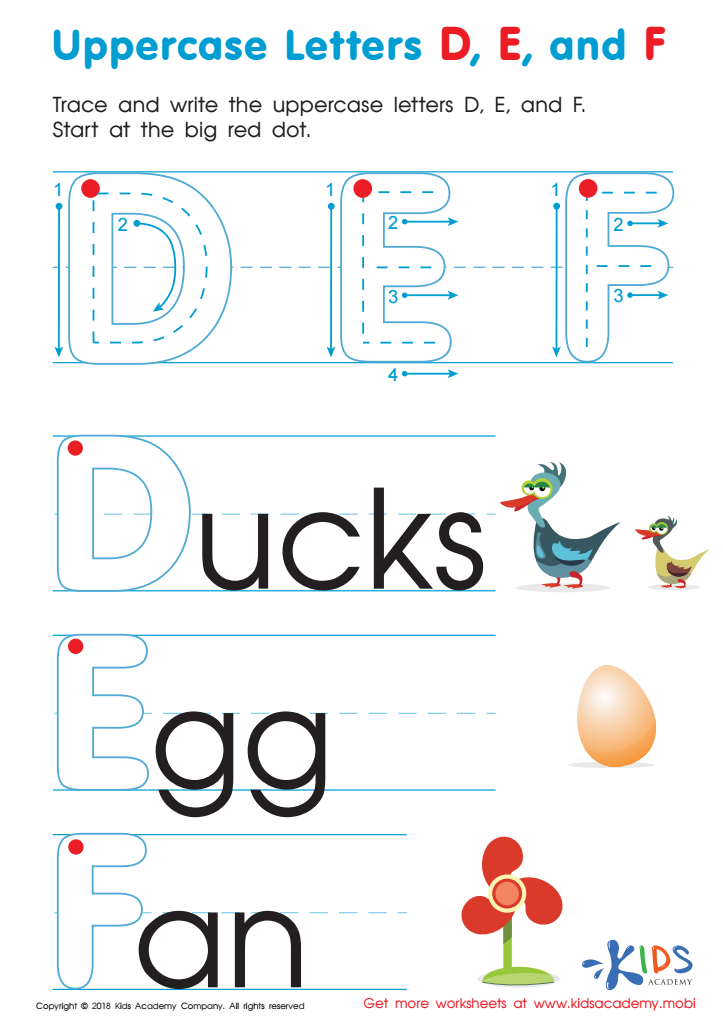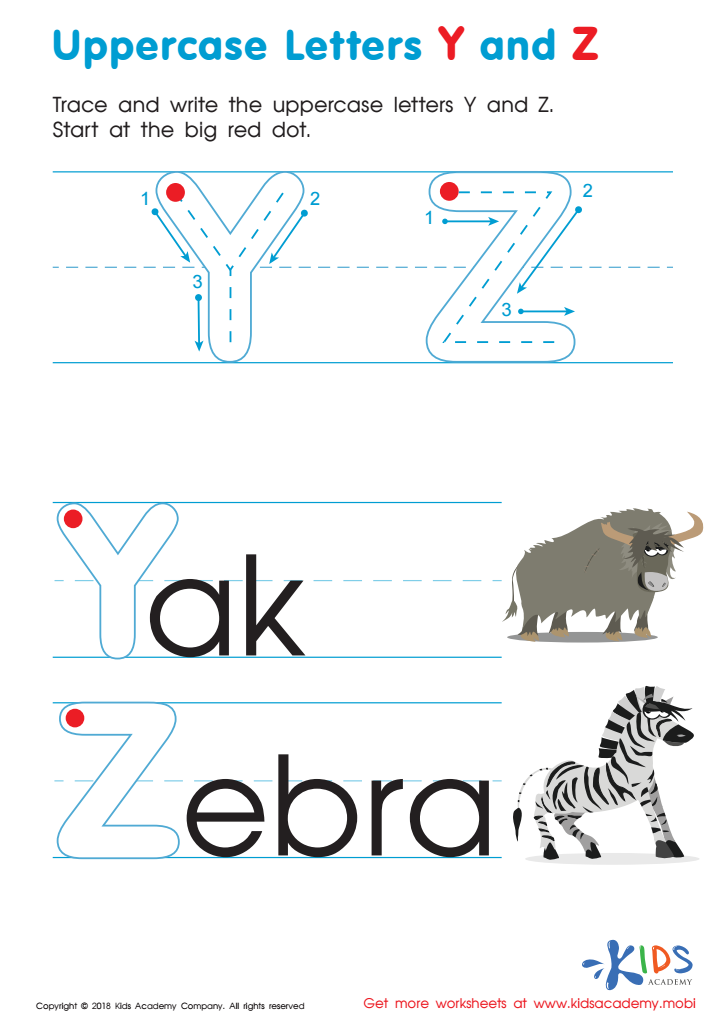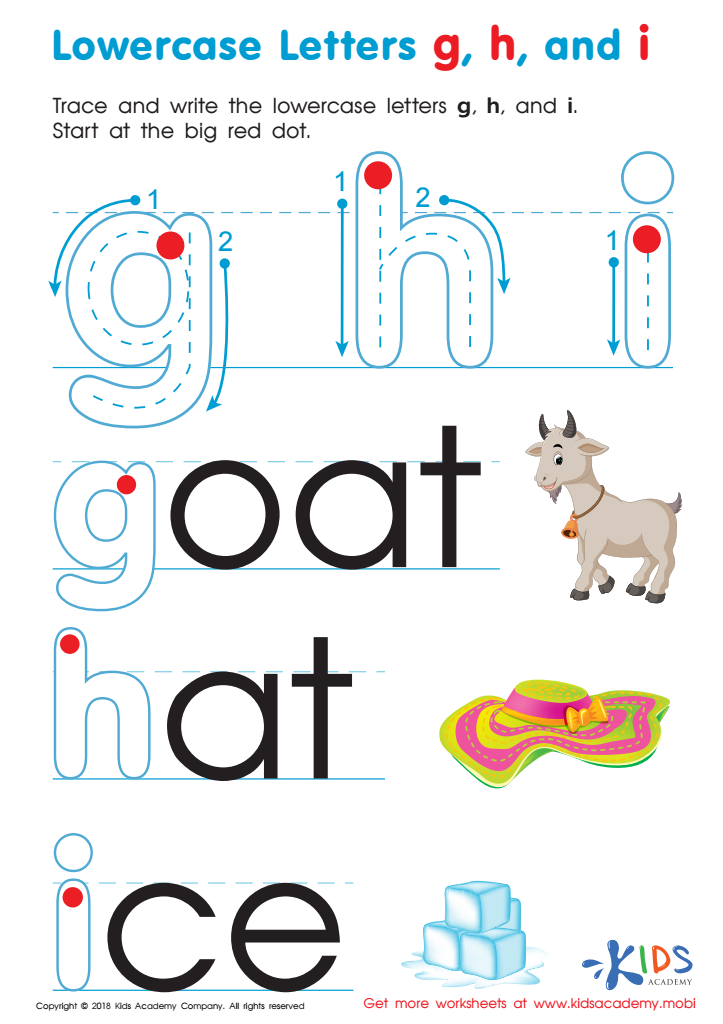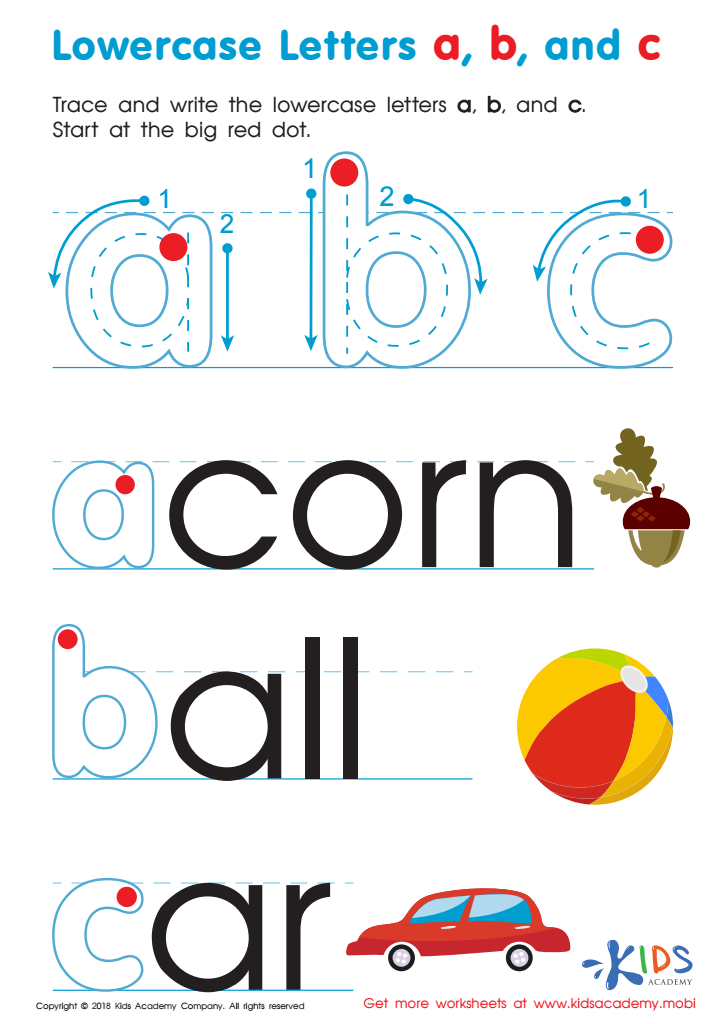Handwriting practice Tracing Letters Worksheets for Ages 4-7 - Page 2
28 filtered results
-
From - To


Uppercase Letters D, E, and F Worksheet


Uppercase Letters Y Z Worksheet


Lowercase Letters g h i Worksheet


Lowercase Letters a b c Worksheet
Handwriting practice, specifically tracing letters, is crucial for children aged 4-7 for several reasons. Firstly, it develops fine motor skills. At this stage, children's hand muscles are still forming, and tracing letters helps enhance their grip and hand-eye coordination, essential for everyday tasks such as dressing and eating.
Secondly, it lays the foundation for literacy. Recognizing and forming letters is the first step toward reading and writing. Tracing helps children internalize the shapes and sounds of letters, creating a connection between visual symbols and their phonetic counterparts, thereby boosting early reading skills.
Moreover, tracing practice nurtures cognitive development by linking visual perception with muscular memory, promoting better focus and attention to detail. It's also an excellent way to introduce children to structured learning, as it involves following specific patterns and sequences, fostering discipline and perseverance.
Lastly, handwriting practice can be a fun, engaging activity that builds confidence. Mastery in writing gives children a sense of accomplishment and encourages a positive attitude towards learning. Teachers and parents who prioritize handwriting practice offer children a robust foundation for their academic journey, as well as practical life skills. Investing time in tracing letters ensures children are well-prepared for more complex tasks in the future.
 Assign to My Students
Assign to My Students



















